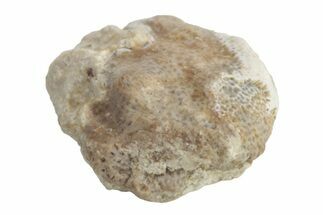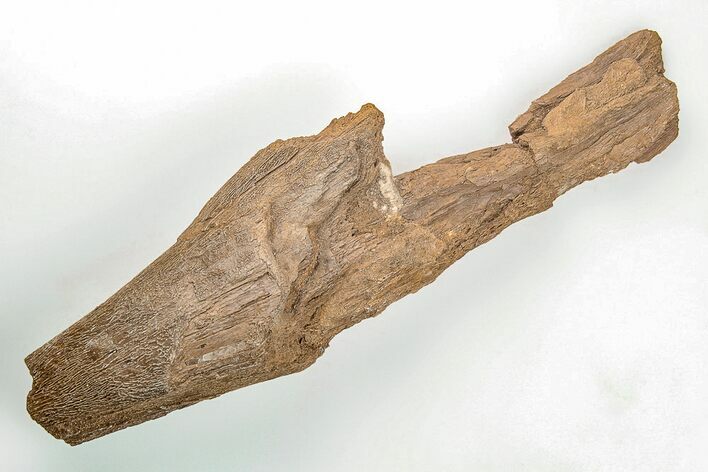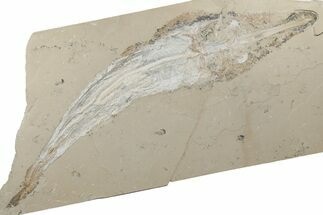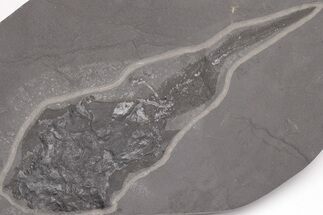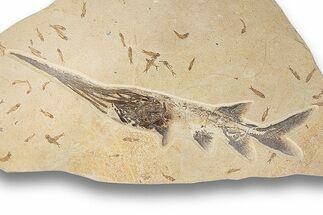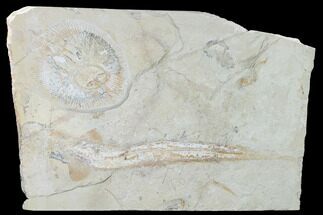This Specimen has been sold.
6.9" Cretaceous Swordfish (Protosphyraena) Rostrum - Kansas
This is a 6.9" wide fossilized rostrum section from a large Cretaceous swordfish (Protosphyraena sp.). It was collected from the Smoky Hill Chalk in Gove County, Kansas. The bone has excellent preservation and two partial teeth can be observed at the base of the rostrum. This is a really cool specimen that collectors shouldn't pass up. Who doesn't want to own part of a swordfish's sword?
There is very minimal restoration on the rostrum; only one noticeable repaired crack and a couple small areas of gap fill restoration. these don't detract from the pieces overall quality.
There is very minimal restoration on the rostrum; only one noticeable repaired crack and a couple small areas of gap fill restoration. these don't detract from the pieces overall quality.
Protosphyraena is a fossil genus of swordfish-like marine fish that had a worldwide distribution during the Upper Cretaceous Period. It was a large fish, averaging 2–3 meters in length. It shared the Cretaceous oceans with aquatic reptiles such as mosasaurs and plesiosaurs, as well as with many other species of extinct predatory fish. Though fossil remains of this taxon have been found in both Europe and Asia, it is perhaps best known from the Smoky Hill Member of the Niobrara Chalk Formation of Kansas.
The Smoky Hill Chalk Member of the Niobrara Chalk formation is a Cretaceous conservation Lagerstätte, or fossil-rich geological formation, known primarily for its exceptionally well-preserved marine reptiles. It outcrops in parts of northwest Kansas--its most famous localities for fossils--and in southeastern Nebraska. Large, well-known fossils excavated from the Smoky Hill Chalk include marine reptiles such as plesiosaurs, large bony fish such as Xiphactinus, mosasaurs, pterosaurs, and turtles.
SPECIES
Protosphyraena sp.
LOCATION
Gove County, Kansas
FORMATION
Niobrara Formation
SIZE
6.9" long
CATEGORY
SUB CATEGORY
ITEM
#197696
We guarantee the authenticity of all of our specimens.
 Reviews
Reviews


